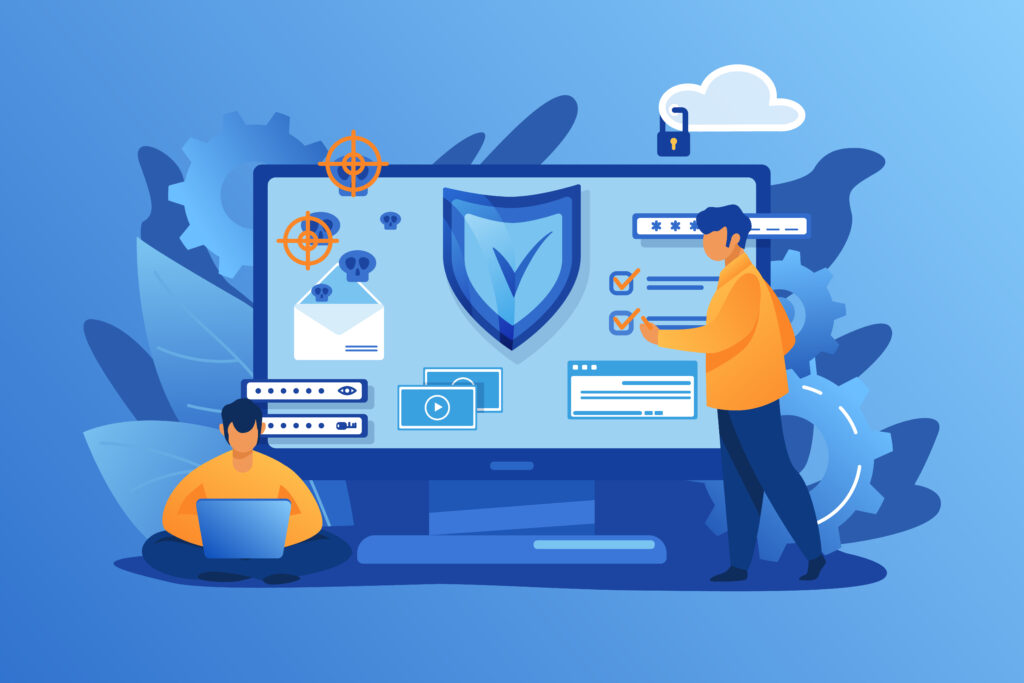
Table of Contents
In the current digital landscape, businesses confront a constantly expanding range of cyber threats that have the potential to compromise sensitive data, disrupt operations, and harm their reputation. As organizations adopt more intricate IT infrastructures, the significance of securing endpoints becomes paramount. This article delves into the realm of endpoint security, exploring its importance and the primary strategies that organizations can implement to safeguard their network’s first line of defense.
Endpoint and endpoint technologies are more actively used in cybersecurity and are crucial topics in the security world. So, let’s understand.
What do we mean by the Endpoint?
The Endpoint is a technical term used for all clients that we use in the digital world whether it is laptops, desktops, phones, tablets, and so on, these are the endpoints.
And technologies or software that is installed on those endpoints to protect the devices from harmful or malicious attacks.
Earlier people and organizations spend their security budget and time protecting networks using technologies like firewalls, routers, and network filtering which is not proper protection it’s just like securing the outer shell of the coconut it’s hard on the outside, but soft on the inside. But now people and organizations not using that coconut structure on their endpoints.
Now they have to create and use such technologies on the endpoint that have multiple layers for an attacker which is hard to bypass.
so, security should be like an onion with multiple tough layers to bite through.
After the evolution of WIFI and the internet over cell networks, our devices move around with us and lose the protection of the coconut structure.
Our endpoints, laptop, tablet, and phone, don’t stay on our home network or organization’s network which may invite hackers to attack. So those days are gone.
Now World is changing, and that’s why endpoint protection is more important because it moves with the assets or endpoints and protects them and it also adds extra layers of protection like an onion.
Security must be layers of protection that predict, prevent, detect, respond, and recover from both known and unknown threats. Much research has been done and malware is considered the biggest threat. The organization started increasing the security budget for endpoint protection in a couple of years.
what are the endpoint protection technologies?
As all of you must be heard about Antivirus which is common in use and is one of the basic technologies used to protect Endpoint. Now many technologies introduced in the market like EDR, XDR, and many more.
Endpoint protection technologies also include things like whitelisting execution prevention, intrusion prevention, disk encryption, and much more. And these are supported by mechanisms such as signatures, behavioral analysis, machine learning, artificial intelligence, etc.
The endpoints are controlled by humans but humans may do mistakes to allow attackers in. Endpoints are easy targets for attackers as they are used as launch points to attack other endpoints.
For Example an extremely popular, automated malware. Ransomware that asks for ransom for our data.
If Endpoint protection technologies are installed on endpoints they will predict, prevent, detect, respond, and recover against ransomware and all other types of attacks.
We need to understand endpoint protection is an important brick in cybersecurity building.
Best Practices for Endpoint Security
A. Endpoint Hardening
- Implementing secure configurations and baselines
- User privilege management and access controls
B. Employee Education and Awareness
- Promoting cybersecurity hygiene and best practices
- Training on identifying social engineering attacks
C. Network Segmentation
- Isolating endpoints to limit lateral movement
- Implementing proper firewall and network policies
D. Incident Response and Recovery
- Establishing an effective response plan
- Regular backups and data restoration practices
E. Continuous Monitoring and Threat Intelligence
- Leveraging security information and event management (SIEM)
- Benefits of threat intelligence sharing
The Future of Endpoint Security
A. Artificial Intelligence and Machine Learning
- Enhancing threat detection and response capabilities
- Addressing zero-day vulnerabilities
B. Cloud-based Endpoint Security Solutions
- Benefits of cloud-native security platforms
- Scalability and centralized management
C. Zero Trust Architecture
- Shifting from perimeter-based security to individual endpoint trust
- Continuous authentication and access controls
D. Regulatory Compliance and Endpoint Security
- Impact of data privacy regulations (e.g., GDPR, CCPA)
- Ensuring endpoint security alignment with compliance requirements
Conclusion
Endpoint security plays a vital role in safeguarding organizations’ networks and data from evolving cyber threats. By adopting a multi-layered approach and leveraging key components such as antivirus solutions, EDR, DLP, and patch management, businesses can bolster their defenses and mitigate risks effectively. Implementing best practices like endpoint hardening, employee education, network segmentation, and incident response further fortify security postures.
As technology continues to advance, embracing future trends like AI and ML, cloud-based solutions, and zero-trust architecture will be essential. Compliance with regulatory requirements also remains crucial to protect sensitive information.
By prioritizing endpoint security, businesses can ensure comprehensive protection for their networks, prevent data breaches, and maintain their customers’ trust. With the ever-present threat landscape, staying ahead of cyber adversaries through robust endpoint security measures is no longer an option but a necessity for organizations of all sizes.

